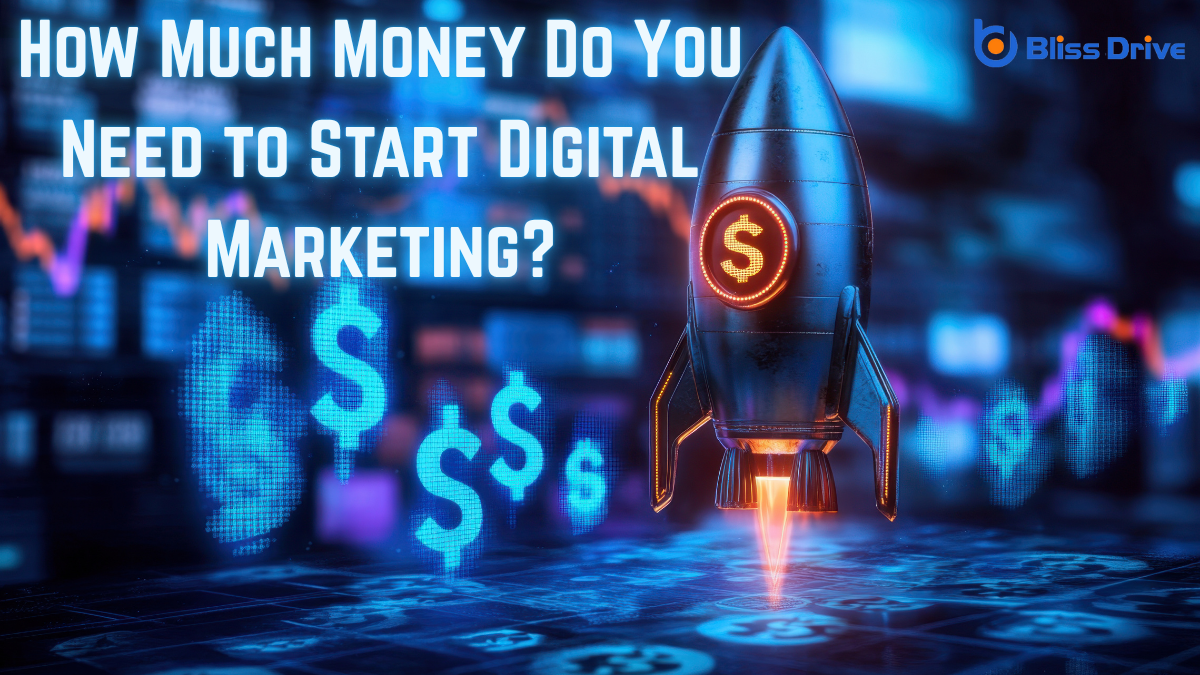Learn More About Us

When we think about starting digital marketing, the question of cost inevitably comes up. We don't need to break the bank to get started, but a strategic approach is essential. Let's explore how a modest budget can be effectively allocated to key tools and platforms, ensuring we get the best bang for our buck. How can we make savvy decisions that keep us competitive without overspending? Let's find out together.
When considering how to begin our digital marketing journey, how do we evaluate our goals effectively? First, we need to outline what we aim to achieve. Are we looking to increase brand awareness, generate leads, or boost sales? Understanding our objectives helps us focus our strategies.
Next, we should set specific, measurable, achievable, relevant, and time-bound (SMART) goals. This framework guarantees our goals are clear and trackable.
We must also consider our target audience. Who are they, and what do they value? Aligning our goals with their needs guarantees our efforts resonate.
Finally, we should regularly review and adjust our goals based on performance data. This iterative process allows us to refine our approach and maximize our digital marketing success.

Traversing the vast landscape of digital marketing requires the right tools and platforms to guarantee success.
As we initiate this journey, it's essential to identify the basics that’ll help us reach our goals efficiently.
Let's explore some fundamental elements:
Crafting a budget-friendly content strategyA plan for creating, publishing, and managing content to meet business goals. doesn’t mean compromising on quality or impact. Let’s focus on maximizing value with minimal resources.
First, we should identify our audience’s preferences and pain points. This helps us create relevant content that resonates without unnecessary expense.
Next, repurpose existing content. Transform a blog post into a video or infographic, extending its reach without extra cost.
Collaboration is another key. Partnering with industry peers for guest posts or co-hosted webinarsLive or recorded online presentations or seminars used to educate and engage an audience. can amplify our message at low or no cost.
Finally, leverage free tools like Canva for design and Google Analytics for insights.
Let's consider how we can allocate our budget for paid advertising effectively.
We'll explore the best ways to distribute funds across different ad platforms and identify strategies that maximize cost efficiency.
When setting a budget for ad platforms, understanding the landscape of paid advertising is essential to confirm our funds are allocated effectively.
Let’s break it down. First, we should identify our goals and what we want to achieve. This sets the stage for everything that follows.
Next, we need to research different platforms to see where our audience spends their time.
Here’s a quick checklist to guide us:
Although digital marketing can seem challenging, we can maximize our impact with cost-effective ad strategies by focusing on the smart allocation of our funds.
First, let’s prioritize the platforms where our target audience is most active. For instance, if our audience spends a lot of time on Instagram, we should allocate more of our ad budget there.
Next, we should experiment with different ad formats, such as carousel ads or storiesA feature on platforms like Instagram and Facebook where users can post photos and videos that disap..., to find what resonates best. It’s essential to set a clear budget cap to prevent overspending.
We can also take advantage of retargetingAdvertising that targets users who have previously visited a website or interacted with a brand. ads, which allow us to re-engage users who’ve shown interest.
Understanding how to measure the return on investment (ROI)A measure of the profitability of an investment, calculated by dividing the net profit by the cost o... for our paid advertising is crucial to guarantee that we're using our funds effectively.
We need to make sure our investments translate into tangible results. To accurately gauge ROI, we should focus on several key metrics:

Launching a digital marketing campaign requires us to look beyond the obvious expenses, as additional costs and hidden fees can quickly add up.
It's easy to overlook charges for design tools, analytics software, or premium features on platforms we use daily. Subscription fees for email marketing services and costs for A/B testingA method of comparing two versions of a web page or app against each other to determine which one pe... tools also sneak into our budget.
Don't forget potential fees for hiring freelancers or consultants to help polish our strategy.
We also need to take into account transaction fees if we're selling products online or costs for boosting posts on social media.
These expenses can seem minor individually, but collectively, they impact our overall budget. Being aware of these can help us plan more effectively and avoid unexpected surprises as we progress.
To get the most out of our digital marketing budget, we need to prioritize the right marketing channels that align with our goals.
Let's make the most of the free tools available to us, which can greatly cut costs while still providing valuable insights.
Why should we prioritize specific marketing channels when aiming for maximum ROI with our digital marketing budget?
Simply put, not all channels offerThe specific product or service being promoted by affiliates. the same value. By focusing on the most effective ones, we maximize returns and avoid wasting resources.
Let's consider the factors that help us make informed decisions:
While managing a tight digital marketing budget, we shouldn't overlook the powerful free tools at our disposal. These tools offer robust features that can help us create, analyze, and optimize our campaigns without spending a dime.
For instance, Google Analytics provides insights into website traffic and user behavior, allowing us to make informed decisions. Social media platforms like Facebook and Instagram have built-in analytics, enabling us to understand our audience engagement.
Canva, a free design tool, lets us create eye-catching graphics without hiring a designer. By leveraging these resources, we maximize our return on investment while keeping costs low.
Let's embrace these tools to enhance our marketing efforts, ensuring we allocate our budget wisely and achieve our goals efficiently.
Tracking campaign performance is essential to optimizing our budget and maximizing ROI. By closely monitoring our digital marketing efforts, we guarantee each dollar is well-spent.
Let's focus on key metrics that'll guide our decisions:
In summary, let's remember that starting digital marketing doesn't have to break the bank. By evaluating our goals, selecting vital tools, and crafting a budget-friendly content strategy, we can effectively allocate our resources. It's important to monitor performance and adjust our spending to guarantee we're getting the most bang for our buck. By staying flexible and focusing on maximizing ROI, we'll be well on our way to achieving our digital marketing objectives.
